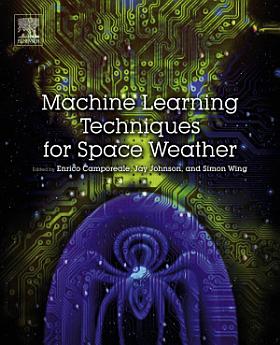Machine Learning Techniques for Space Weather
About this ebook
About the author
Enrico Camporeale earned his PhD in Space Plasma Physics at the Queen Mary University of London, and had postdoctoral experience at the Los Alamos National Laboratory. He is currently a staff member at Centrum Wiskunde & Informatica (CWI), the national research center for Mathematics and Computer Science in The Netherlands. His research activity covers a broad range of topics in plasma, space physics, and space weather, with emphasis on state-of-the-art numerical models. At CWI, he is leading a research group focused on machine learning techniques for space weather applications.
Simon Wing has more than 20 years’ experience in space physics and space weather. He has authored and co-authoredover 100 papers and over 300 talks, and developed the Wing Kp Model that runs at several space weather centers aroundthe world. He also developed a technique for imaging plasma sheet ion properties from ionospheric observations. He iscurrently a Principal Staff Physicist at the Johns Hopkins University Applied Physics Laboratory.
Jay Johnson earned his Ph.D. degree in physics from the Massachusetts Institute of Technology and has held research positions at University of Alaska, Massachusetts Institute of Technology, and Princeton Plasma Physics Laboratory, where he served as Principal Research Physicist, co-director of the Princeton Center for Heliophysics, and Head of Space Physics from 2005-2016. He is currently a professor in the Department of Engineering and Computer Science at Andrews University, Michigan. He has published over 70 papers on theoretical plasma physics with emphasis on applications to space plasmas.




